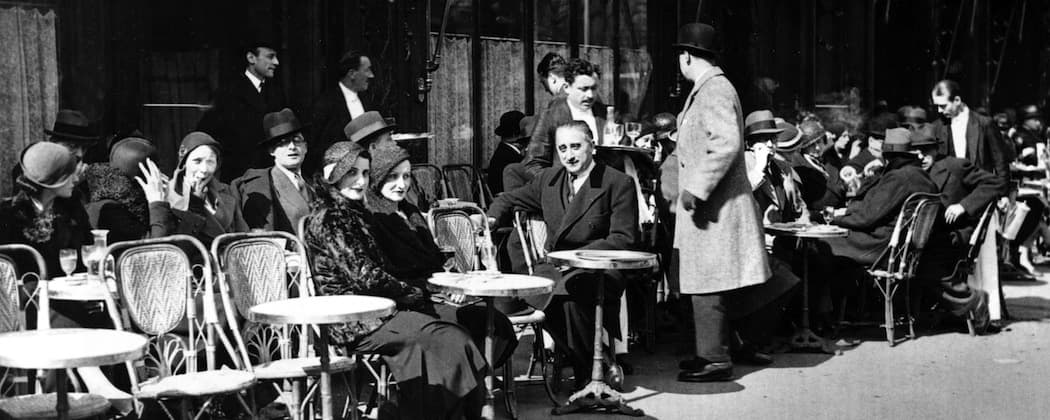What You Wanted To Do-- And What You Eventually Did
 |
| Weber's Cafe at Rue Royale, Paris, April 1932. |
Art is always the process of squaring what you initially wanted to do and what you eventually did. I find that's always the case.
For the piece that I'm working on now what I'm envisioning is 1930s Paris, and I'm scoring a scene in a movie that doesn't exist yet. One of the scenes is in a bar in Paris in 1932. Everybody understands what that could possibly be: there is some type of jazz playing, so there is piano, guitar or mandolin and probably some type of wind instrument. There can't be any electronic instruments, but on this track I am in fact using a lot of electronics, but it's just an anachronism--which is an interesting thing in itself but it has to be done correctly so that it's understood as being an anachronism and not just an error. Take painting for instance. You have an idea of creating a conceptual work and you're using oils on canvas. As the piece progresses you have to look at it and say, how does that square with what I was originally thinking? Ultimately it has to be something else and it's fairly rare that anybody that's creating any kind of art form that it turns out exactly the way it was envisioned.
Another example is the process of manually scoring a piece. Everybody has seen a composer's score with all the scratch and scribble. What had to happen was a "manufacturing" of the music through the work of copyists and publishers. Copyists are instrumental in getting it into a published form with all the extracted parts and put in front of the musicians and then conducted, performed and recorded. A whole sequence of things that has to happen before there's an audience to hear it. But when you go all the way all the way back to the beginning where the first notes were being put on manuscript paper it's a totally different world. Artists intimately understand the gap between the original ideas and what eventually happened.
5/23/2021
What actually happened:
An EDM mix:


Comments